
Those who can, pending at 15:00 in Mexico. I hope to repeat it because I will go for the real world at that time ... Served
. AT

 exactly a year ago José Musse, my nemesis pocket © , Desastres.org published in the last libel slander devoted to yours truly, Same as-as usual-was disemboweled point by point in this humble blog lost in cyberspace, showing the lies that the subject likes to write, as usual, so easily.
exactly a year ago José Musse, my nemesis pocket © , Desastres.org published in the last libel slander devoted to yours truly, Same as-as usual-was disemboweled point by point in this humble blog lost in cyberspace, showing the lies that the subject likes to write, as usual, so easily.  A year ago at the initiative of Project blog Watermelon held in the blogosphere the first World Day of skepticism and against pseudoscience advance . This date was chosen to commemorate the death of Carl Sagan , one of the main promoters of critical thinking.
A year ago at the initiative of Project blog Watermelon held in the blogosphere the first World Day of skepticism and against pseudoscience advance . This date was chosen to commemorate the death of Carl Sagan , one of the main promoters of critical thinking. 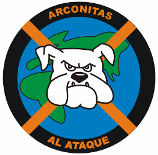 The List of Shame is a blog created by Fernando Frias and where, as its head, is to list the masters, postgraduate courses, summer courses own pseudo-titles that are taught in English universities. That is, subjects and courses that are embarrassed. O
The List of Shame is a blog created by Fernando Frias and where, as its head, is to list the masters, postgraduate courses, summer courses own pseudo-titles that are taught in English universities. That is, subjects and courses that are embarrassed. O 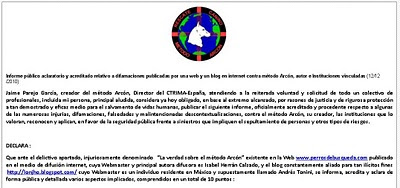
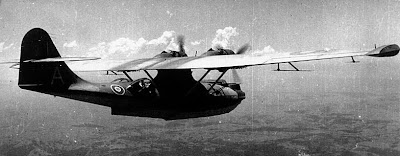
This article is based on the transcript of the official British report into the incident of this device.
want to thank Carlos Guerreiro Portuguese journalist and author of "Aterrem em Portugal" the giving me this document for publication. http://www.landinportugal.org/index.htm
"We were members of the crew of a Catalina aircraft that we derive from our base at Pembroke Dock at 20:00 of April 16, 1943 in a antisubmarine patrol in the Gulf of Biscay.
1:45 day on April 17, 1943 found a fuel leak in the auxiliary tanks. We were about 240 kms. the northern coast of Spain. We knew it was impossible try to return to our base, so we decided to make an emergency landing at close to the English coast.
At 04:00 splashed down about 20 kms. west of Cape Toriñana in the province of La Coruña. The unit was not damaged, nor any of us. Continue in the unit and fired two signal flares. Also we got rid of the heavier equipment.
About 06:00 am we spotted two small fishing boats approaching. Flares fired two more, and we got on board our lifeboats, before we destroy the rest of the team and holed the hull of the plane with an ax. One of the fishing, the "Pepe Monis" We came on board, and taken to Marin in the province of Pontevedra.
The plane sank very quickly and we did not hear anything more about this.
Marin arrived at 14:00 and took us to the Naval Academy. Later they took us to see the Port Authority of the Merchant Marine, an officer there asked us some questions in English. They wanted to know the type of equipment and if we had been shot down. We asked if we could see the British Consul in Vigo.
18:30 On came the British Consul, Mr Lindsay and drove us to a hotel in Vigo. next day gave us clothes.
On the afternoon of April 19, 1943 an Officer of the Air Force took us to Valladolid and stayed in a hotel. We were not under arrest or surveillance. The Air Force authorities gave us 500 pesetas to each of us.
On April 21, 1943, another Air Force official took us by car to Madrid. At this time we had some technical questions on the type of product, from whence we came and what was our mission. Not answer any of these questions. In Madrid we were taken to the British Embassy and we received the Air Attaché. We were taken to a hotel and were there until the afternoon of April 23, 1943, then took a train that took us to Gibraltar. We stayed in Gibraltar from 24 to 29 April and then embarked on HMS Bachaquero to the United Kingdom "

HMS Bachaquero
Catalina Mk 1B (PBY 5B)
Code: Phil 271
RAF Coastal Command 210 Sq.
F / Sgt. - William Stanley ALDERSON - 1064096 - Pilot - RAFVR
P / O - Alfred James ISAAC - 132151 - copilot - RAFVR
F / O - George Wersley Adanson - 122329 - Navigator - RAFVR
Sgt - Paul Stanley GEES - 571 010 - Ing De Vuelo
Sgt. – Frank Gordon HOBSON – 820040 – 1º Observador/artillero – A.A.F.
Sgt. – Claud Alfred POTTINGER – 1253453 – 2º Observador/artillero - R.A.F.V.R.
T/Sgt. – Alan Brian ALLEN – 577604 - 3º Observador/artillero – R.A.F.
F/Sgt. – Charles Williams CARSON – 755721 - 4º Observador/artillero – R.A.F.V.R.
Sgt. – William James McDONALD – 622504
LAC - H. Thomas James BOUVIER - 1236824 - RAFVR

The Consolidated PBY Catalina flying boat is designed in 1935 and produced by U.S. company Consolidated, which transformed the ability to patrol the United States Navy. It was used by the Royal Air Force before the war, and built under license in the Soviet Union in this way, the Catalina flying boat was the most produced of history. The PBY was built by Canadian known as Canso.
In World War II, the PBY was used in anti-submarine warfare, bombing, patrol, convoy escorts, search and rescue missions and cargo transport. The PBY was the most efficient airplane in its class, and was the most produced flying boat in the Second World War. PBY recent military assets were withdrawn from service until the 1980's.
The meaning of the acronym PBY was, "PB" "Patrol Bomber" "Patrol Bomber" and "Y" was the code for the manufacture of Consolidated Aircraft, the aircraft designation system Naval 1922.
The PBY birth of the project (he also was known in the U.S.) went back to a request made in 1933 by the U.S. Navy seaplane for a new long-range patrol. By then, the main instrument in this category was the Consolidated P2Y, designed by Isaac M. Buffalo Laddon, brilliant engineer in the field of seaplanes and director of the Consolidated Aircraft. To cope with the new proposal, perfected the P2Y, providing a cantilever wing, mounted on the hull shallow but wide with a center support that housed the flight engineer. This wing was different from that of the P2Y per plant, rectangular in section trapezoidal central and outer sections, and all-metal construction with durable coating (the wings were covered in fabric). A unique feature was the floats on the wings joined by articulated mounts electrically retracted, so that in flight, the floats were on the tips of the wings. The helmet, also metallic, differed from that of other major appliances to have a single deck, with rounded upper surfaces. A bow tie was a chamber and a transparent window for the display of bombing, protected by a blind test of seawater. The forward cabin was largely glass and a turret equipped with a 7.62 mm machine gun. Aft of the wing, had set up two shot to right and left, each with a sliding panel. Unlike P2Y, the tail was conventional, with stabilizers mounted quite high in lead.
The power plant went from the Cyclone to the new Pratt & Whitney Twin Wasp double star, clean fairing in the center wing section, with guts and cooling Havilland propellers with variable pitch.
features PBY-5B, were the same as the PBY-4 adding a review of the tail, stabilizers and elevators and turrets on the side bubbles for machine guns and an increase in engine power. Were built between May and November 1942 for the RAF 225 units with codes FP100 to FP324.

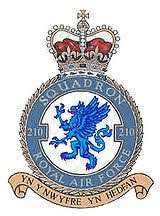
210 Squadron RAF Coastal Command
Originally formed as No 10 Naval Squadron in San Pol on February 12, 1917 was created as a search unit responsible for escorting the RNAS bombers and reconnaissance aircraft.
In August 1917, the squadron received the new S. Camel and in October returned to their coastal defense duties. However, the German offensive of March 1918 resulted in the unit sent back to the western front to help strengthen defenses and during actions of April 1, 1918, the squadron was absorbed by the newly formed RAF and would be Squadron 210. In July 1918 he returned back to the coast, but rejoined the fight on the western front in recent weeks.
was reformed as a torpedo-bomber unit on 1 February 1920 in Gosport, equipped with the Sopwith Cuckoo , but this was short, the solution was 1 Squadron April 1923. The next reform was in Felixstowe on March 1, 1931 as a seaplane squadron equipped with Southampton II. The move to a new permanent base came in June when arrived at Pembroke Dock, which was still under construction. Were retooled with Rangoons in August 1935, moved to Gibraltar during the Abyssinian crisis, for return to Wales in August 1936. On his return would be equipped again, this time with Singapore. He also became involved in the English Civil War when he was sent to Algeria to protect neutral ships of being attacked by Axis submarines. The Sunderland come in June 1938.
With the outbreak of war the squadron was incorporated immediately to patrol the Irish Sea and with detachments in Invergordon and Sullom Voe, from the North Sea to the Norwegian coast. The squadron provides central base in July 1940, when he moved to Oban and began the conversion to the Catalinas. From October 1942, the squadron was back in Pembroke Dock with a detachment in Gibraltar, covering the landings in North Africa. The squadron moved to Hamworthy in April 1943, while the detachment of Gibraltar remained there, however, on 31 December, the detachment was transferred to No 202 squadron headquarters was disbanded.
The squadron was renamed on January 1, 1944 as No. 190 based Sullon Voe in Shetland where he continued working until its final dissolution on June 4, 1945.
Motto: Yn and yn nwyfre hedfan - Floating in the sky
Squadron Codes used:
| VG | May 1939 - Sep 1939 |
| DA | Sep 1939 - Dec 1943 |
Fuentes:
National Archives, Kew, London
Carlos Guerreiro

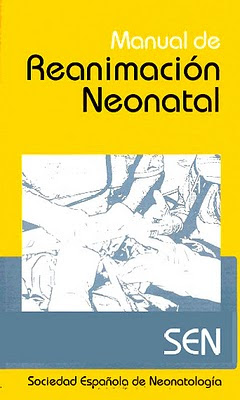
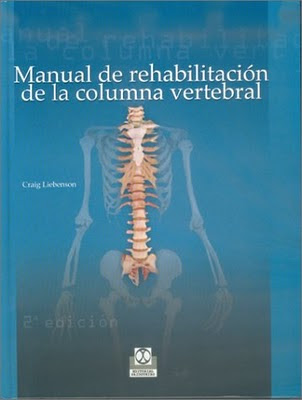
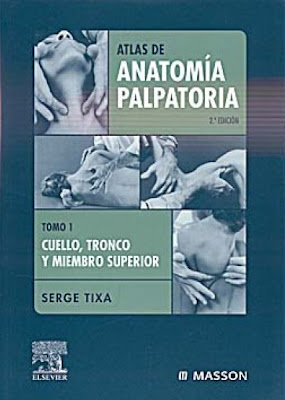


Sunderland MkIII EK572 with section 103-B5 appeared in anti-submarine patrol from Pembroke Dock (Wales) base of the group 19 of the 228 Squadron of the RAF, on the 14:45 he received a message that would support the attack the U-966 on the Galician coast, when he reached the assigned area all they found were the lifeboats for the crew of U-966 and four fishing boats trying to rescue (Virgen de Covadonga, San Francisco, La Concha and San Pedro), made a couple of passes over the area which made several pictures and launched a raft, but that calm hard very quickly, instantly appeared three Junkers Ju 88 aircraft led by Albrecht Bellstdt belonging to 2/Zg1 immediately attacked the lone Sunderland received six attacks in the past, the Bellstdt Albrecht, got the device fell burning from the port side and crashed violently into the water splitting in two to one Stake miles northeast of Bars, were the 18:00 h. The tail of the plane was floating into the estuary Ortigueira, while the San Francisco fishing Barqueiro O was the one who approached the impact zone where he picked up only six bodies recovered from plane, the other six did not knew nothing else.
Of the six bodies recovered could only be identified three, Alfred Wells, Arthur B. Boocock and William F. Merryfield. The chapel for the eleven dead (5 German U-966 and 6 English) had been installed at night in the warehouse of the Fishermen's Association, planted a English flag and a bouquet of flowers on each casket and two wreaths , one for each nationality of the deceased. The next day, about eleven o'clock in the municipal cemetery or funeral Barqueiro acts began in honor of the deceased, were present among others, the German Consul in La Coruña, the addition of the Kriegsmarine in Madrid and the Commander and an officer of U-966.
some time British Airmen were then transferred to the civilian cemetery of La Coruña and then to the British Cemetery in Lujua (Bilbao), but there are only three graves identified not know if the other three are unknown or are individually or in a common grave or mausoleum.

Part of the crew of the EK 572, Boocock is second from right standing
(Boocock Alan)
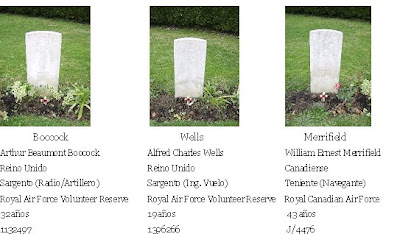
These are the three sailors buried in Bilbao British Cemetery, the tombstones are the original of each but not read.
The rest of the crew was made up:
F/O.- A. W. Vaughan Franklin - - 160006
Richard McKormick - - 1493486
Joseph Stanley Jarvis - - 1214340 Kames
Frederick Pizacklea
Alistair Williams Aitkin - - 1567438
DJ McCaree
Frank Lawrence - - 1425155
W. Moss
David Edward Nattress - - 1173094

echo Drawing a crew of a Sunderland
In 1934, the British Mail required that all first class mail was sent to overseas travel by air, establishing a grant for the development of intercontinental air transport, similar to U.S. domestic program a decade earlier. In response, the Imperial Airways announced a competition between aircraft manufacturers to design and produce 28 seaplanes, weighing 18 ton unit and range of 1,130 km and a capacity for 24 passengers.
The contract went directly to Short Brothers. Although Short had built flying boats for military and Imperial Airways, none of them was the size and characteristics required. Oswald Short, head of the company, began a crash program to submit a design for a flying more advanced than those previously built.
While the S-23 was still in development, the British Air Ministry specification issued in 1933 "R.2/33", which required a seaplane new generation ocean surveys, with four engines may be monoplane or biplane. This version is called S.25 and was presented to the Air Ministry in 1934.
The Short S.25 Sunderland was a flying boat developed for the Royal Air Force by the British manufacturer Short Brothers of Rochester, England. First flew on October 16, 1937 piloted by chief test pilot of Short, John Lankester Parker. In part based on the S-23 seaplane Empire, Empire insignia Airways, the S.25 was extensively modified for military use. It was one of the most powerful and seaplanes used during World War II, and was used to counter the threat of German submarines at the Battle of the Atlantic. Takes its name from a village in northeastern England.
The S.25 shared many traits in common with the S-23. High-wing monoplane of metal construction, the fuselage contained two decks with 6 compartments on the lower deck. It was equipped with flaps patented down Gouge also moved back, increasing the wing area and providing a 30% rise in landing. The crew was initially set at 7 but in later versions was 11 or older.
The specification required an offensive weapon in a 37 mm cannon and 900 kg of bombs, mines or (possibly) depth charges. This charge was stored in the fuselage and was extracted by rail under the center wing section, opening a gate on each side of the pump room. Defensive armament included a mechanized turret Nash & Thomson FN-13 with four 7x7 mm Browning machine guns. at the end of the tail, and a 7x7 mm Browning. on each side of the fuselage. In later versions added a turret with two guns mounted dorsally at the top of the fuselage, bringing total to 18 guns, more than any other aircraft during the war.

The production of the Mark III quickly began in December 1941, shows a revised hull configuration was tested on a Mark I in June. This change improved the seaworthiness, which had worsened with the increasing weight of Sunderland.
The Mark III proved to be the best variant of Sunderland, with 461 units built. Most were built by Short factories in Rochester and Belfast, another 35 at a new factory (albeit temporary) in White Cross Bay on Lake Windermere, while 170 units were built by Blackburn Aircraft. The Sunderland Mark III proved to be one of the most important weapons of Coastal Command, in conjunction with the Catalina.
As the submarine began using passive recipients Metox which detected the radar signal that ASV MkII equipped the Sunderland, the number of sightings decreased drastically. The RAF response was to update the radar ASV MkIII version, operating in the range of 50 cm. During the operating time of the MkIII, several improvements were added four more machine guns in a fixed position in front of the fuselage just behind the turret , another change was that by passing patrols of the 14 hours pass 500 rounds of ammunition per weapon to 1,000 rounds of ammunition.
As radar detection of submarines became more effective, there were more night patrols to hunt submarines in the area when they came to your batteries. Attacking in the dark, was a problem that was solved by the use of flares released electrically by the stern of the plane that gave enough light.
At that time the workload of the crew had increased so much that needed at least 10 crew. In early 1944, the load of explosives on the plane, the length of the patrols and the fuel load required more power and proceeded to change the engine for a P & R1830-90B W 1200-cv. also that they were also influenced and used by other Catalina, Liberator and thereby Dakota, for maintenance services was an advantage because they were familiar with them. This led to the production of aircraft MKV.
Crew: 8 to 11
(Two pilots, radio operator, navigator, engineer, weapons operator, three to five gunners)
Length: 26 m
Wingspan:
Height: 10 m
Wing area: 138 m²
Empty weight: 15,663 kg
Weight loaded: 26,332 kg
Powerplant: 4 × 9-cylinder radial engine Bristol Pegasus XVIII, 794 kW each.
maximum speed : 336 km / h
Cruising Speed \u200b\u200b : 285 km / h
Speed \u200b\u200b Lost: 125 km / h
Range: 2,848 km
Service ceiling 4,880 m
Weapons:
16 × 7.7 mm Browning machine gun
2 Browning machine gun of 12.7 × mm
Pumps: could carry several types, bombs, mines and depth charges, for a total of 900 kgs.



Until 1926 was a major shipyard of the Royal Navy and was located on the coast of Wales, in 1931 installed the 210 of the RAF squadron equipped with seaplanes Southampton II. Dura nte nearly 30 years, Royal Air Force used these facilities . During 1943, became the basis of the armies of the Sunderland and was the largest operational base for seaplanes in the world. In 1943 at least 99 were permanently stationed there seaplanes between Sunderland and Catalina
Given its importance as an RAF base, it was no surprise that during War based global Pembroke Dock was the subject of several attacks by the Luftwaffe .
After the war the city enjoyed a degree of prosperity, which, however, changed in 1957 when it was announced that the RAF would drastically reduce their presence.
Squadrons based in Pembroke Dock:
119 - RAF - Sunderland
201 - RAF - Sunderland
209 - RAF - Catalina
210 - RAF - Sunderland and Catalina
228 - RAF - Sunderland
230 - RAF
240 - RAF – Catalina
320 - RAF
461 – RAAF – Sunderland
422 – RCAF – Sunderland
VP-63 – USN – PBY5 Catalina

Sources:
HARASSED LOBOS - Jose Antonio Tojo Ramallo
RED TIDE, BLACK TIDE - Juan Carlos Salgado